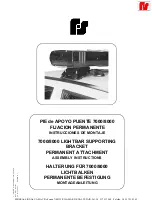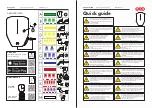
6-49
Temperature
--
A, B, C
The temperature grades are A (the highest), B, and C,
representing the tire’s resistance to the generation of
heat and its ability to dissipate heat when tested under
controlled conditions on a specified indoor laboratory
test wheel. Sustained high temperature can cause the
material of the tire to degenerate and reduce tire life, and
excessive temperature can lead to sudden tire failure.
The grade C corresponds to a level of performance
which all passenger car tires must meet under the
Federal Motor Vehicle Safety Standard No. 109.
Grades B and A represent higher levels of performance
on the laboratory test wheel than the minimum required
by law.
Warning: The temperature grade for this tire is
established for a tire that is properly inflated and not
overloaded. Excessive speed, underinflation, or
excessive loading, either separately or in combination,
can cause heat buildup and possible tire failure.
Wheel Alignment and Tire Balance
The wheels on your vehicle were aligned and balanced
carefully at the factory to give you the longest tire life
and best overall performance.
Scheduled wheel alignment and wheel balancing are not
needed. However, if you notice unusual tire wear or
your vehicle pulling one way or the other, the alignment
may need to be reset. If you notice your vehicle
vibrating when driving on a smooth road, your wheels
may need to be rebalanced.
Summary of Contents for 2002 Express
Page 1: ......
Page 6: ...v ...
Page 7: ...vi Model Reference This manual covers these models Passenger Van Cargo Van Cab and Chassis ...
Page 258: ...5 27 2 Loosen the plastic nut caps 3 Remove the center cap ...
Page 306: ...6 39 3 Remove the nuts with a deep socket wrench 4 Remove the hidden upper nuts ...
Page 327: ...6 60 GM Vehicle Care Appearance Materials ...
Page 398: ...7 59 Maintenance Record DATE ODOMETER READING SERVICED BY MAINTENANCE PERFORMED ...
Page 399: ...7 60 Maintenance Record DATE ODOMETER READING SERVICED BY MAINTENANCE PERFORMED ...
















































